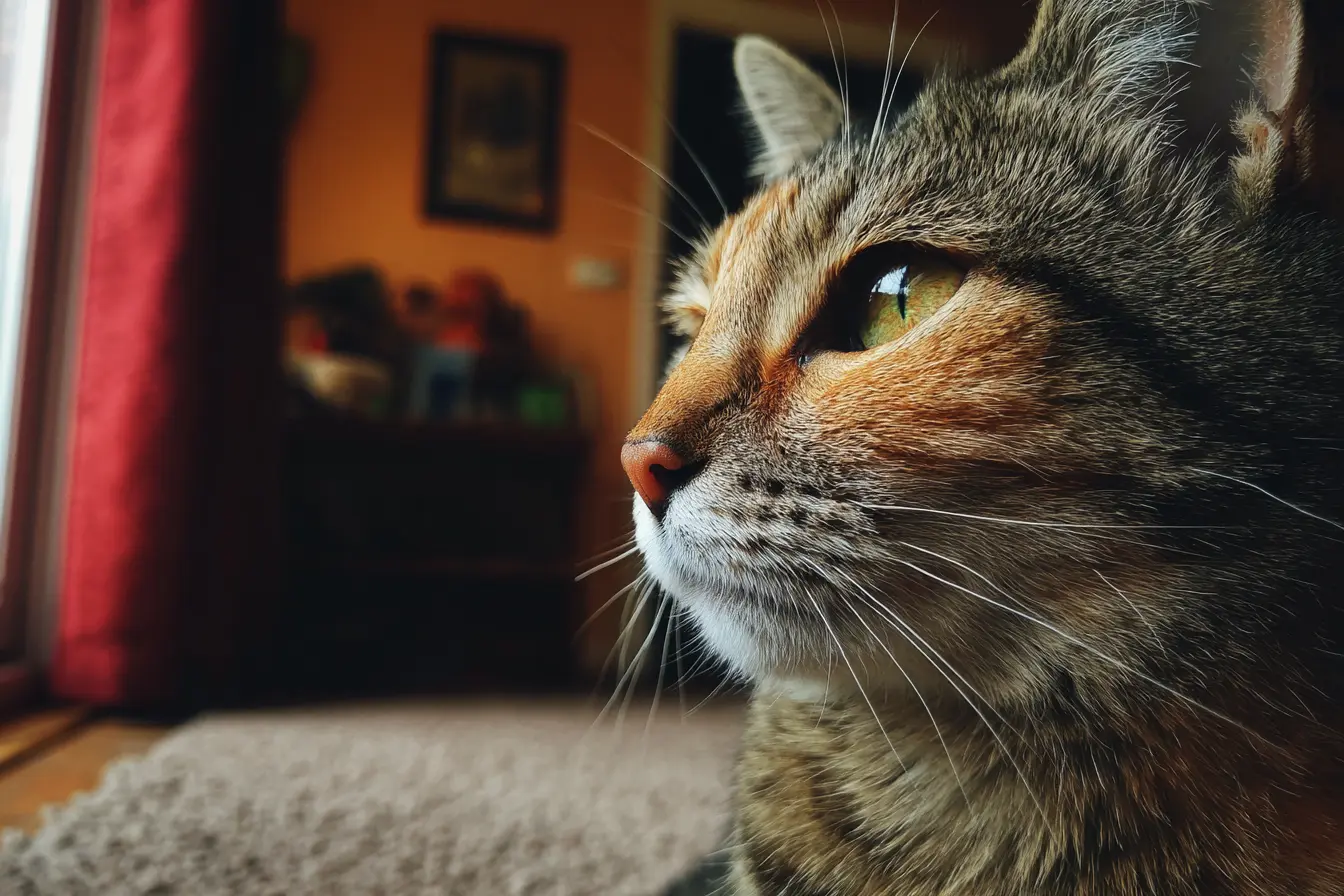
Cancer in Cats: Causes, Symptoms, Diagnosis, Treatment, and Prevention
Cancer in cats is a serious and sometimes life-threatening disease that can affect various parts of the body. While cancer is more common in older cats, it can develop at any age. Some cancers are slow-growing, while others are aggressive and spread rapidly.
Early detection and prompt treatment can improve a cat’s prognosis and quality of life. This guide covers everything cat owners need to know about cancer in cats, including its causes, symptoms, diagnosis, treatment options, and preventive measures.
What is cancer in cats?
Cancer is the uncontrolled growth of abnormal cells, which can form tumours or spread throughout the body. Some cancers remain localised, while others metastasise, affecting multiple organs.
Tumours in cats can be classified as:
- Benign tumours, which do not spread but can still cause health issues if they grow too large.
- Malignant tumours, which invade surrounding tissues and can spread to other parts of the body.
Common types of cancer in cats
Cats can develop various types of cancer, with some being more prevalent than others.
Lymphoma
Lymphoma is one of the most common cancers in cats, affecting the lymphatic system. It is often linked to feline leukaemia virus (FeLV) infection.
Symptoms of lymphoma:
- Loss of appetite and weight loss
- Lethargy
- Vomiting or diarrhoea
- Swollen lymph nodes
- Difficulty breathing (if lymphoma affects the chest)
Squamous cell carcinoma
Squamous cell carcinoma is a type of skin cancer that often affects the mouth, nose, ears, and areas exposed to the sun.
Symptoms of squamous cell carcinoma:
- Non-healing sores or ulcers
- Red, inflamed, or bleeding areas on the skin
- Difficulty eating or swallowing if located in the mouth
Mammary cancer
Mammary cancer, or breast cancer, is more common in unspayed female cats. Around 85% of mammary tumours in cats are malignant.
Symptoms of mammary cancer:
- Lumps or swelling in the mammary glands
- Ulceration or discharge from the nipples
- Pain or discomfort in the affected area
Fibrosarcoma
Fibrosarcomas are aggressive tumours that develop in soft tissues, often at vaccination sites or areas of previous trauma.
Symptoms of fibrosarcoma:
- Firm, growing lumps under the skin
- Swelling or pain in the affected area
- Lameness if located near joints
Osteosarcoma
Osteosarcoma is a type of bone cancer that causes pain and lameness.
Symptoms of osteosarcoma:
- Swelling around bones or joints
- Limping or reluctance to move
- Fractures with minimal trauma
Oral cancer
Oral tumours, such as squamous cell carcinoma, are common in older cats and can severely impact eating and drinking.
Symptoms of oral cancer:
- Bad breath
- Difficulty eating or swallowing
- Excessive drooling
- Mouth bleeding or facial swelling
Causes and risk factors for cancer in cats
The exact causes of cancer in cats are not always clear, but several factors may increase the risk:
Age
Older cats are more likely to develop cancer due to cumulative cellular damage over time.
Genetics
Certain breeds, such as Siamese cats, may have a higher predisposition to some cancers.
Viral infections
Feline leukaemia virus (FeLV) and feline immunodeficiency virus (FIV) can increase the risk of lymphoma and other cancers.
Environmental factors
Exposure to second-hand smoke, pesticides, and chemicals may contribute to cancer development.
Sun exposure
Cats with light-coloured or thin fur are at a higher risk of squamous cell carcinoma due to prolonged sun exposure.
Hormonal influences
Unspayed female cats have a significantly higher risk of developing mammary cancer.
Symptoms of cancer in cats
Cancer symptoms vary depending on the type and location of the tumour. General signs of cancer include:
- Unexplained weight loss
- Loss of appetite
- Lumps or swelling that persist or grow
- Lethargy or decreased activity
- Difficulty eating, swallowing, or breathing
- Persistent vomiting or diarrhoea
- Non-healing wounds or sores
- Lameness or difficulty walking
If you notice any of these symptoms in your cat, seek veterinary attention as soon as possible.
Diagnosing cancer in cats
Diagnosing cancer requires a thorough veterinary examination and diagnostic tests.
Veterinary examination
A vet will check for lumps, abnormalities, and any signs of discomfort. They will assess your cat’s medical history and general health.
Diagnostic tests
- Blood tests assess overall health and detect underlying conditions.
- X-rays and ultrasounds help locate internal tumours and assess their spread.
- Biopsy and fine needle aspiration involve taking tissue or fluid samples to confirm cancer.
- CT or MRI scans provide detailed imaging for tumours affecting bones or organs.
Treatment options for cancer in cats
The treatment plan depends on the type, location, and stage of cancer, as well as the cat’s overall health.
Surgery
Surgical removal is often the best option for solid tumours that have not spread. In some cases, amputation may be required for bone cancer.
Chemotherapy
Chemotherapy is used to treat cancers like lymphoma. Cats generally tolerate chemotherapy well, with fewer side effects than humans.
Radiation therapy
Radiation therapy is effective for tumours that cannot be fully removed with surgery, such as those in the mouth or nasal cavity.
Immunotherapy
Some newer treatments aim to stimulate the immune system to fight cancer, but they are not widely available.
Palliative care
For cancers that cannot be cured, palliative care focuses on keeping the cat comfortable. This may include pain relief, appetite stimulants, and fluid therapy.
Can cancer in cats be prevented?
While not all cancers can be prevented, certain steps can reduce the risk:
Regular veterinary check-ups
Annual check-ups help detect early signs of cancer and other health problems.
Vaccination
Vaccinating against feline leukaemia virus reduces the risk of FeLV-associated cancers.
Spaying and neutering
Spaying female cats before their first heat cycle significantly reduces the risk of mammary cancer.
Sun protection
Keeping cats indoors during peak sun hours or applying pet-safe sunblock can help prevent skin cancer in light-coloured cats.
Minimising environmental toxins
Avoiding exposure to tobacco smoke, pesticides, and harmful chemicals can lower cancer risk.
Balanced diet and healthy weight
A high-quality diet and maintaining a healthy weight may help reduce the likelihood of cancer and improve overall well-being.
When to see a vet
Seek veterinary attention immediately if your cat shows any of the following symptoms:
- Sudden weight loss or loss of appetite
- Lumps that are growing or changing shape
- Difficulty eating, swallowing, or breathing
- Unexplained bleeding or non-healing wounds
- Severe lethargy or persistent pain
Early diagnosis and treatment can greatly improve a cat’s prognosis.
Conclusion
Cancer in cats is a serious but sometimes manageable condition. Early detection, prompt veterinary care, and appropriate treatment can improve a cat’s quality of life and, in some cases, extend their lifespan.
While not all cancers can be prevented, regular check-ups, vaccinations, and a healthy lifestyle can help reduce the risk. If you notice any concerning signs in your cat, consult a veterinarian as soon as possible to ensure the best possible outcome.
Vets near you
Speciality vets
- Aquatics vet specialists
- Birds vet specialists
- Camelids vet specialists
- Cats vet specialists
- Cattle vet specialists
- Deer vet specialists
- Dogs vet specialists
- Equines vet specialists
- Exotic vet specialists
- Goats vet specialists
- Pigs vet specialists
- Poultry vet specialists
- Sheep vet specialists
- Small Mammals vet specialists
- Wild vet specialists



